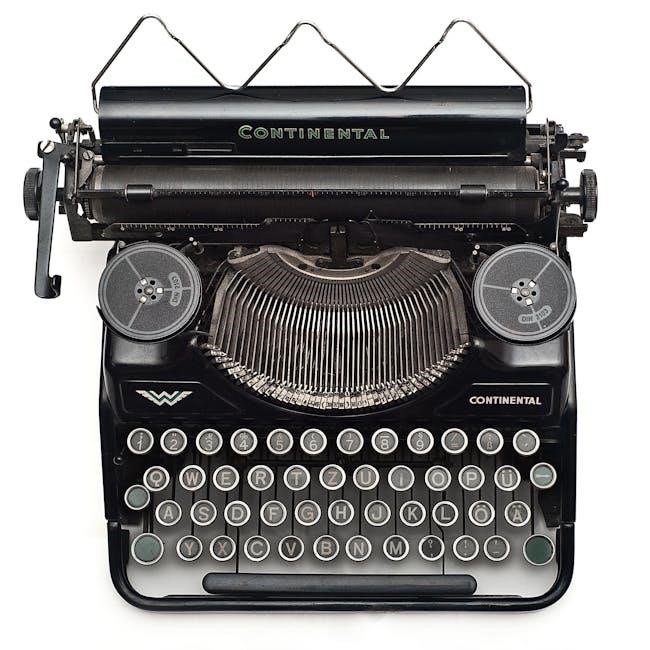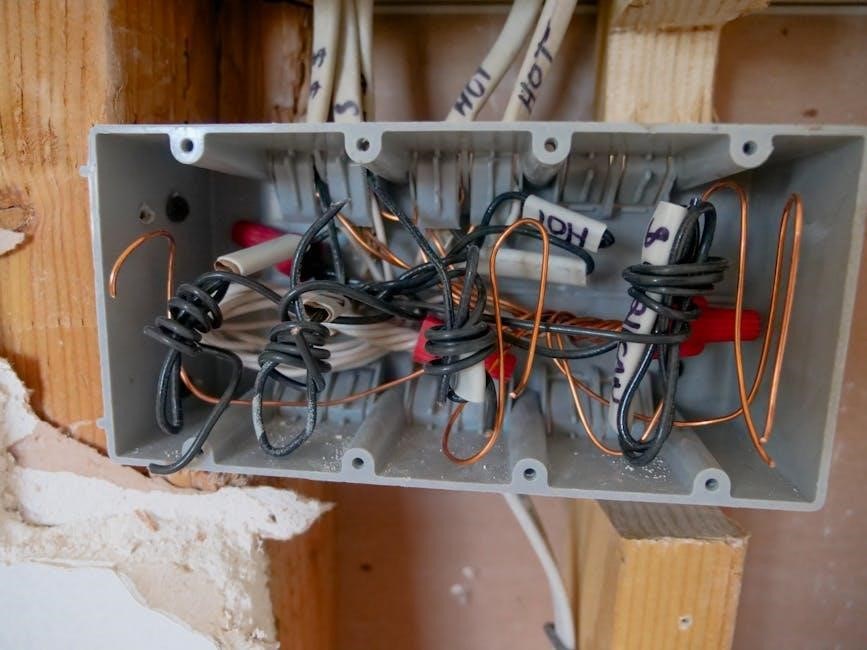One Night Stand with the Alpha King is a captivating novel that explores an unexpected liaison between a strong-willed woman and a powerful ruler‚ leading to profound consequences.
1.1 Overview of the Novel
One Night Stand with the Alpha King is a captivating tale of forbidden attraction and unforeseen consequences. Set in a world where civilization and primitive laws collide‚ the story follows a chance encounter between a strong-willed woman and a powerful ruler. The novel explores themes of secrets‚ family drama‚ and the struggle for recognition‚ creating a compelling narrative that keeps readers engaged from start to finish.
1.2 Author and Publication Details
Belle Scarlett is the author of One Night Stand with the Alpha King‚ a compelling novel in the Royal Alphas series. The book has gained popularity for its engaging storyline and is available in various formats‚ including PDF and audiobook. Readers can access the novel on platforms like Joyread and Audible‚ making it widely accessible to fans of fantasy and romance genres.
Main Plot and Storyline
One Night Stand with the Alpha King revolves around a forbidden attraction between a strong-willed woman and a powerful ruler‚ leading to a secret child and societal drama.
2.1 The Unexpected Encounter
The Unexpected Encounter sets the stage for the novel‚ as Celica‚ a strong-willed woman‚ finds herself in a compromising situation after her drink is spiked at a graduation ceremony. She stumbles into a stranger’s room‚ unaware that the man she encounters is Nathaniel‚ the Alpha King. This chance meeting sparks a forbidden attraction and sets off a chain of events that will alter their lives forever.
2.2 The Secret Child and Its Consequences
The unexpected encounter leads to a secret child‚ reshaping Celica’s life and Nathaniel’s reign. The protagonist faces societal judgment‚ family abandonment‚ and the challenges of single motherhood‚ all while hiding the child’s true identity. This hidden truth becomes a central conflict‚ driving the story’s emotional depth and the characters’ struggles for acceptance and redemption in a world governed by strict laws and expectations.

Key Characters in the Novel
Celica‚ the resilient female protagonist‚ and Nathaniel‚ the enigmatic Alpha King‚ form the core of the story. Their forbidden attraction and subsequent struggles drive the narrative’s emotional and conflictual layers forward.
3.1 Celica: The Female Protagonist
Celica is a strong‚ independent woman whose life takes a dramatic turn after a chance encounter with the Alpha King. Her resilience and determination shine through as she navigates unexpected challenges‚ including the consequences of her liaison and societal pressures. Celica’s journey is marked by personal growth and a struggle for acceptance in a world governed by strict laws and customs.
3.2 Nathaniel: The Alpha King
Nathaniel‚ the Alpha King‚ is a powerful and enigmatic ruler whose life is disrupted by a brief yet impactful encounter with Celica. His struggle to balance duty and desire drives the story‚ revealing a complex character torn between royal obligations and personal longing. Nathaniel’s journey explores themes of leadership‚ loyalty‚ and the unforeseen consequences of a single‚ transformative night;
Major Themes and Conflicts
The novel delves into forbidden attraction‚ family drama‚ and power dynamics‚ exploring how a single night shapes destinies and tests loyalty‚ duty‚ and love.
4.1 Forbidden Attraction and Its Aftermath
The novel explores the intense‚ forbidden attraction between Celica and Nathaniel‚ whose one-night encounter sparks a chain of events filled with societal taboos‚ emotional turmoil‚ and unforeseen consequences. The forbidden nature of their relationship challenges the strict laws of their world‚ leading to conflicts with family‚ duty‚ and societal expectations. This theme drives the emotional depth and tension throughout the story.
4.2 Family Drama and Abandonment
The novel delves into the emotional turmoil of family conflicts‚ abandonment‚ and societal pressures. Characters like Therese face rejection from their families due to a single mistake‚ leading to a life of isolation and struggle. The strict laws of their civilization exacerbate these dramas‚ forcing individuals to confront harsh realities and forge new paths‚ adding depth to the story’s emotional landscape and character development.

The World-Building
The novel’s world-building centers around the Star Seekers’ civilization on a primitive planet‚ governed by strict laws to ensure survival after a crash.
5.1 The Civilization of Star Seekers
The Star Seekers of Searth‚ after crashing on a primitive planet‚ formed a structured society with strict laws to ensure survival. Their civilization is a blend of advanced knowledge and primitive adaptability‚ creating a unique dynamic where diplomacy and hierarchy play crucial roles in maintaining order among the castaways.
5.2 The Primitive Planet and Its Laws
The primitive planet‚ where the Star Seekers settled‚ is governed by strict laws essential for survival. These rules dictate social hierarchies and forbidden relationships‚ creating a rigid structure. The harsh environment demands adherence to these laws‚ ensuring the civilization’s stability. Consequences for disobedience are severe‚ maintaining order and protecting the fragile balance of their primitive yet structured world.

Critical Moments in the Story
One Night Stand with the Alpha King features pivotal moments like the graduation ceremony incident and a battle victory‚ which drastically alter the characters’ lives and relationships.
6.1 The Graduation Ceremony Incident
Celica found herself in a tangled situation at the wolf tribe’s graduation ceremony. Her drink was spiked‚ leading to a disorienting escape attempt. She ended up in a stranger’s room‚ unaware of the life-altering consequences. This incident sparked a chain reaction‚ reshaping her relationships and destiny‚ particularly with Nathaniel‚ the Alpha King‚ and setting the stage for the novel’s dramatic unfolding.
6.2 The Battle Victory and Its Impact
Trevor’s unexpected victory over Valor left Celica in shock‚ struggling to accept the reality of the battle’s outcome. Her relief at his survival clashed with the weight of new responsibilities‚ as the triumph intensified tensions and altered alliances. This pivotal moment reshaped Celica’s perspective on loyalty‚ power‚ and her evolving connection with Nathaniel‚ propelling the story toward unforeseen challenges and emotional turmoil.
The Wedding and Its Significance
The wedding serves as a pivotal moment‚ symbolizing power dynamics and forbidden attraction. Nathaniel’s offer to Celica sparks tension‚ reshaping their relationship and the story’s trajectory profoundly.
7.1 The Royal Wedding Offer
Nathaniel’s wedding proposal to Celica is a strategic move to unite their worlds‚ blending political necessity with underlying attraction. This offer challenges Celica’s independence and forces her to confront her feelings‚ creating a complex web of duty‚ desire‚ and societal expectations that define their evolving relationship and the novel’s central conflict.
7.2 The Turning Point in Relationships
The graduation ceremony marked a pivotal shift in Celica and Nathaniel’s relationship‚ as Celica’s actions and Nathaniel’s victory in battle revealed deeper emotions and mutual respect. This moment of raw vulnerability and shared triumph forged an unbreakable bond‚ altering their dynamics and setting the stage for a future filled with both love and conflict‚ forever changing their destinies.
The Role of Pregnancy in the Plot
The unexpected pregnancy becomes a catalyst for transformative events‚ introducing challenges and reshaping relationships‚ while driving the story toward unforeseen resolutions and emotional depth.
8.1 The Unexpected Pregnancy
The unexpected pregnancy emerges as a pivotal plot twist‚ reshaping the lives of the characters and driving the narrative forward. It introduces emotional turmoil and unforeseen challenges‚ forcing the protagonists to confront their circumstances and make life-altering decisions. This development not only deepens the story’s complexity but also explores themes of responsibility‚ identity‚ and the consequences of a single‚ fleeting encounter.
8.2 The Struggle of Single Motherhood
The struggle of single motherhood in One Night Stand with the Alpha King is portrayed through Therese Havine’s journey‚ who faces societal judgment and familial rejection after her one-night encounter. Raising twins alone‚ she battles emotional and financial hardships‚ highlighting the resilience required to navigate a world that often shuns unmarried mothers. Her story underscores themes of abandonment and the quest for acceptance.
The Alpha King’s Dilemma
The Alpha King faces a profound internal conflict‚ torn between his royal duties and his unrelenting desire for the woman who rejected his wedding offer‚ testing his authority and heart.
9.1 Shade’s Quest for Recognition
Shade‚ the Alpha King‚ seeks acknowledgment and respect in his kingdom while navigating the complexities of his forbidden attraction. His journey highlights the struggle between royal responsibilities and personal desires‚ as he yearns for the woman who has captured his heart‚ despite societal norms and expectations.
9.2 The Power Dynamics in Relationships
The novel delves into the intricate power dynamics between Celica and Nathaniel‚ where authority and vulnerability intertwine. Nathaniel’s role as the Alpha King grants him dominance‚ yet Celica’s strength challenges his control‚ creating a delicate balance of power and submission. Their relationship explores themes of mutual respect and the shift in influence‚ highlighting how personal connections can redefine traditional hierarchies.
The Novel’s Reception and Reviews
Readers praise the novel for its engaging storyline and vivid character development. Many highlight the emotional depth and unexpected twists‚ with high ratings across platforms. Critics commend the author’s ability to weave complex relationships and societal dynamics‚ making it a standout in the genre. The novel has garnered a dedicated fan base‚ with readers eagerly recommending it to others.
10.1 Reader Feedback and Ratings
Readers enthusiastically praise One Night Stand with the Alpha King‚ highlighting its engaging storyline and emotional depth. The novel holds high ratings across platforms‚ with fans commending the vivid character development and unexpected twists. Many describe it as an immersive read‚ while others applaud the author’s ability to balance romance with societal dynamics. The audiobook version has also received acclaim‚ capturing listeners’ attention with its compelling narration.
10.2 Critics’ Opinions on the Storyline
Critics have praised the novel for its intricate plot and vivid world-building‚ with many highlighting the depth of its emotional conflicts. The storyline’s ability to blend romance with societal dynamics has been particularly commended. Reviewers note the author’s skill in crafting relatable characters and maintaining suspense‚ making the book a compelling read for fans of the genre. The narrative’s originality and execution have garnered significant acclaim.

Availability and Formats
One Night Stand with the Alpha King is available in PDF format for free on platforms like NovelCat and Joyread. Audiobook versions are accessible on Audible.
11.1 Where to Read the Novel
One Night Stand with the Alpha King can be read for free on platforms like NovelCat and Joyread. The novel is also available in PDF and audiobook formats on Audible‚ offering readers convenient access to enjoy the story in their preferred format. These platforms ensure that fans of fantasy romance can easily immerse themselves in Celica and Nathaniel’s compelling journey anytime‚ anywhere.
11.2 Audiobook and PDF Options
The novel is accessible in both audiobook and PDF formats‚ offering readers flexibility; The audiobook‚ narrated by Honey Scarlett and Leeroy Will‚ is available on Audible. The PDF version can be downloaded for free from platforms like NovelCat and Joyread‚ making it easy for fans to enjoy the story in their preferred format. This ensures accessibility and convenience for all readers.
Comparisons with Similar Works
One Night Stand with the Alpha King shares themes of forbidden attraction and power dynamics with works like The Alpha’s One and Only Luna and The Bite of the Alpha King.
12.1 Other “Alpha” Themed Novels
One Night Stand with the Alpha King joins a popular genre of “alpha” themed novels‚ sharing similarities with works like The Alpha’s One and Only Luna and The Bite of the Alpha King. These stories often explore themes of forbidden attraction‚ power dynamics‚ and the complexities of relationships involving dominant‚ supernatural characters. The genre captivates readers with its blend of romance‚ drama‚ and fantasy elements.
12.2 The Unique Selling Point of This Novel
One Night Stand with the Alpha King stands out for its rich‚ immersive storytelling and vivid character development. Unlike other “alpha” novels‚ it blends forbidden attraction with a unique blend of fantasy‚ drama‚ and power struggles. The authors ability to craft relatable characters and intricate plot twists sets this novel apart‚ making it a compelling read in its genre. Its unique world-building adds depth to the narrative‚ captivating readers.
One Night Stand with the Alpha King captivates readers with its emotional depth‚ forbidden attraction‚ and unique world-building. A must-read for fans of fantasy and romance blending seamlessly.
13.1 Final Thoughts on the Novel
One Night Stand with the Alpha King captivates readers with its emotional depth‚ forbidden attraction‚ and unique world-building. The novel seamlessly blends fantasy and romance‚ offering a compelling narrative about love‚ power‚ and societal expectations. With well-developed characters like Celica and Nathaniel‚ the story explores themes of fate‚ family‚ and redemption. It’s a must-read for fans of alpha-themed stories with a fresh‚ engaging twist.
13.2 Recommendations for Readers
Readers who enjoy fantasy romance with strong protagonists and alpha themes will find this novel captivating. Its unique blend of forbidden attraction‚ family drama‚ and rich world-building makes it a standout in the genre. Fans of emotional depth and complex relationships will appreciate the story’s layered characters and the exploration of societal expectations. A must-read for those seeking a fresh take on alpha-themed romance.


































































